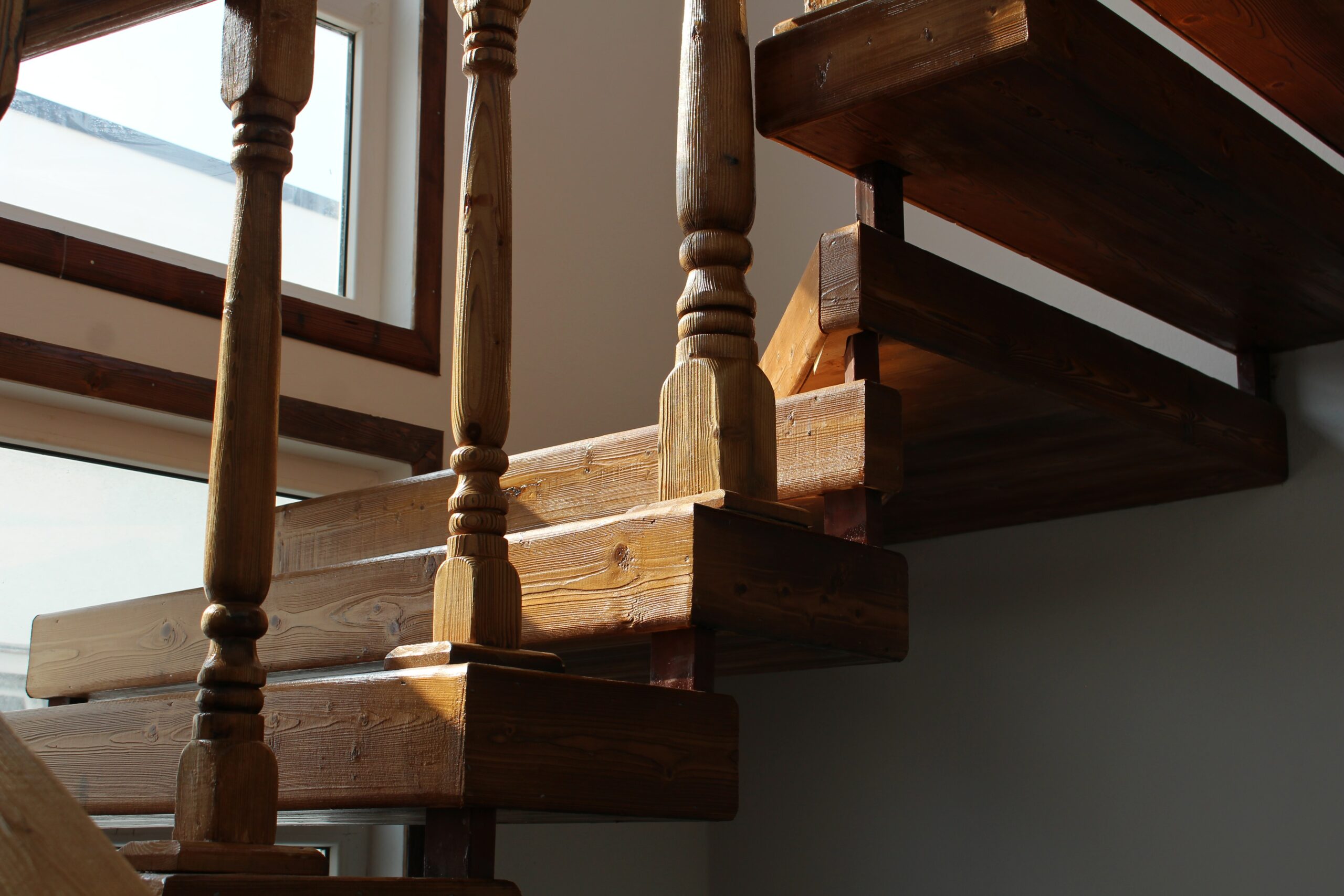Virginia homes boasts a rich history dating back to the colonial era. Its numerous historical residences serve as testaments to the past. Preserving the authenticity of these homes is a labor of love. One noteworthy area of commitment is the restoration of historical staircases. In this blog post, we explore the vital role of custom millwork in maintaining the authenticity of historical staircase designs.
Challenges in Historical Staircase Restoration
Virginia’s historical homes boast a diverse range of staircase designs, reflecting architectural choices from different periods. From the grandeur of Georgian staircases to the simplicity of Federal-style designs, each historical staircase tells its own story. Understanding the characteristics of these designs is essential for a faithful restoration.
Restoring historical staircases comes with its own set of challenges. Years of wear and tear, coupled with the scarcity of matching materials, can make restoration projects complex. Moreover, the delicate balance between preserving original features and meeting modern safety standards adds an extra layer of difficulty.
Custom Millwork: A Necessity in Restoration
Enter custom millwork – a key player in the restoration game. Custom millwork involves crafting woodwork to replicate intricate historical details. In Virginia’s historical homes, where no two staircases are alike, custom millwork becomes not just a choice but a necessity to breathe life back into these architectural treasures.
Collaborating with Preservation Experts
Preserving Virginia’s historical homes requires a collaborative effort. Architects, craftsmen, and preservationists work hand in hand, pooling their expertise to ensure a faithful restoration. The constructive collaboration of these professionals is the key to unlocking the true potential of historical staircase projects.
Choosing Materials for Custom Millwork in Historical Settings
Choosing the right materials for custom millwork in historical settings is a nuanced and critical aspect of the restoration process, particularly in the context of Virginia’s rich architectural heritage. The state’s historical homes showcase a variety of wood species, each with its own unique characteristics that contribute to the overall aesthetic appeal. When embarking on a historic staircase restoration project, it becomes imperative to select materials that not only align with the authenticity of the period but also ensure longevity and sustainability.
Virginia’s woodlands offer many hardwood options, presenting an opportunity to match the original wood species used in historical staircases. Cherry, known for its warm hues and fine grain, has been a favorite choice in colonial and Federal-style homes. Moreover, its timeless elegance makes it a great choice for custom millwork aimed at replicating the look of historic homes.
Oak, with its durability and versatility, is another top wood species found in many historical staircases. Its robust nature makes it an ideal choice for crafting sturdy handrails and balusters that withstand the test of time. In Virginia’s historical restoration projects, the careful consideration of oak as a material ensures both authenticity and structural integrity.
Lastly, for those seeking a balance between richness and affordability, maple may emerge as a suitable option. Its light color and consistent grain pattern provide an understated elegance, often seen in various historical staircase designs. The versatility of maple allows craftsmen to create intricate custom millwork while adhering to the design nuances of specific historical periods.
Balancing Authenticity with Safety and Functionality
Preserving the historical authenticity of staircases is paramount, and it must align with contemporary safety standards. Striking a delicate balance between maintaining the staircase’s historical integrity and ensuring the safety of occupants poses a nuanced challenge. This entails making necessary modifications to meet current safety codes while preserving the original design’s unique charm.
Acknowledging that historical staircases may not seamlessly align with modern safety requirements, restoration may involve discreet enhancements. These modifications, such as reinforcing structural elements or introducing subtle safety features, aim to ensure a secure and functional environment without compromising the staircase’s historical character.
Understanding the intended functionality of the staircase within its historical context is crucial. By harmonizing functional aspects with modern expectations, restoration efforts seek to seamlessly integrate safety measures while allowing historical staircases to continue narrating their stories. This approach not only honors architectural legacies but also ensures the sustained enjoyment and utility of these historical treasures for generations to come.
Contact Us to Take Your Staircase Renovation to the Next Level!
As stewards of Virginia’s historical homes, the responsibility to preserve their unique charm falls upon us. Custom millwork emerges as a hero in this narrative, enabling us to breathe new life into the intricate details of historical staircases. Let’s celebrate the craftsmanship that defines Virginia’s architectural legacy and ensure that these historical treasures continue to stand the test of time. For consultation on historical staircase restoration and custom millwork in Virginia, reach out to our team of experts dedicated to preserving the beauty of the past.

